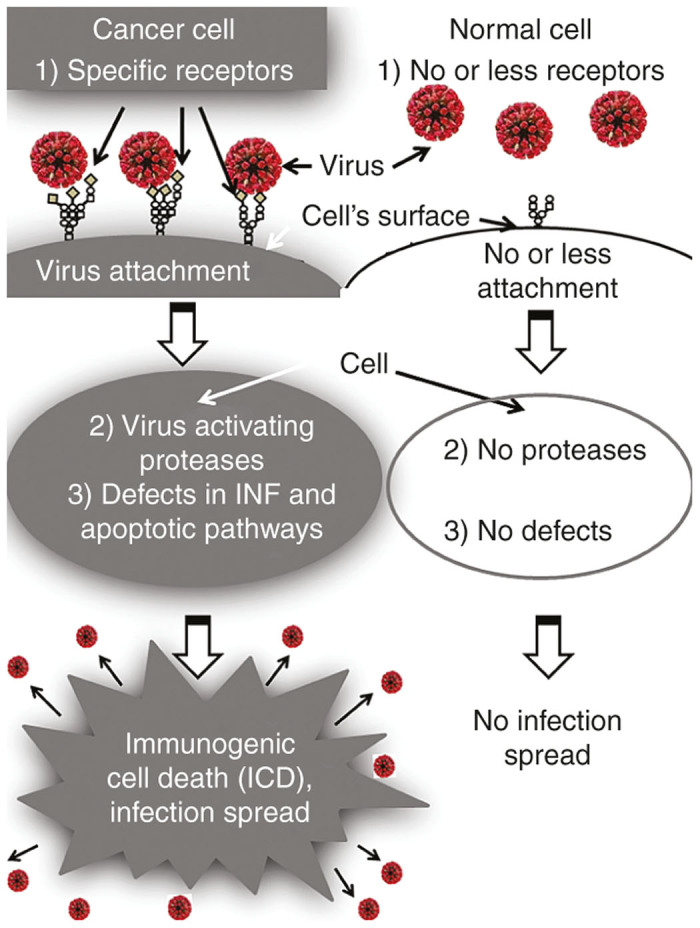Figure 1.

Three levels of cancer-specific infection spread for paramyxoviruses. (1) First level of virus specificity for cancer cells is related to overexpression of specific receptors for paramyxoviruses. Sialic acids residues in a form of sialoglycoproteins serve as receptors for NDV, mumps, and SeV. These sialoglycoproteins are frequently overexpressed in malignant cells. CD46 and nectin 4 serve as natural receptors for attenuated strain of MV, and they are also frequently overexpressed in malignant cells. (2) Second level of virus specificity is related to cancer cells’ specific proteases. The replication cycles of paramyxoviruses require protease cleavage of viral glycoproteins for productive cell enter. Desirable proteases for oncolytic viruses that can activate them are expressed preferentially by cancer cells. For example, matrix metalloproteinases are overexpressed in almost all human cancer cells. (3) Third level of virus specificity is related to cancer cells’ specific genetic defects that allow viral replication. During the process of malignization, a cancer cell accumulates many genetic changes. Along with mutations that promote accelerated proliferation and invasion, many cancerous cells are losing abilities to produce interferon (IFN) and to respond to IFN by apoptotic pathway induction. Such abnormalities make these cells highly susceptible to viral infection. So, oncolytic paramyxoviruses due to abundance of cancer-specific receptors and due to cancer-specific genetic defects are more likely spreading among malignant cells rather than among normal cells.
